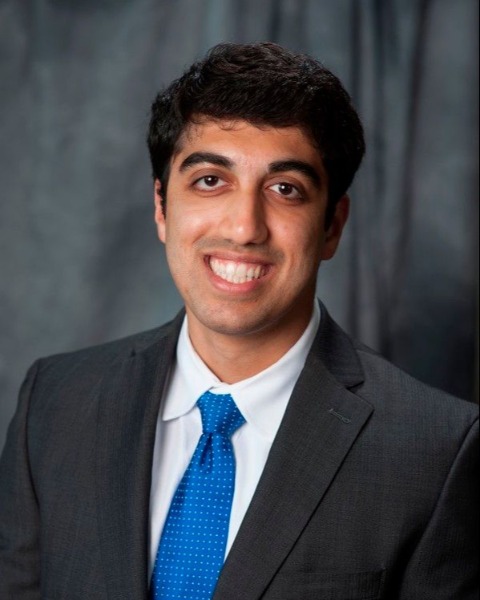Back
Poster, Podium & Video Sessions
Podium
PD02: Pediatric Urology: Neurogenic Bladder, Reconstruction & DSD
PD02-12: The Risk of Gonadal Malignancy in Patients with Androgen Insensitivity Syndrome
Friday, May 13, 2022
8:50 AM – 9:00 AM
Location: Room 255
Pratik Kanabur*, Soo Jeong Kim, Sagar Patel, Lefkothea Karaviti, Paul F Austin, Houston, TX

Pratik Kanabur, MD, BS
Baylor College of Medicine
Podium Presenter(s)
Introduction: Androgen Insensitivity Syndrome (AIS) is a rare condition caused by a mutated androgen receptor, with varying penetrance levels. Patients often have undescended gonads, and thus an increased risk for developing germ cell tumors. Optimal gonad management in these patients is controversial. We aim to review the outcomes of gonad management in a large series of AIS patients at a single center
Methods: A retrospective review was performed of patients with a diagnosis of AIS seen at a freestanding children’s hospital (2010-2020). Various patient factors including age at presentation, phenotypic gender, and subtype of AIS were collected. Management strategies including presence of imaging and tumor markers (AFP, HCG, LDH), surgical intervention, and length of follow-up were also evaluated. We also determined the rate of malignancy in gonadectomy specimens.
Results: 24 patients were included, 6 (25%) with partial AIS (PAIS) and 18 (75%) with complete AIS (CAIS). Age at evaluation ranged from 0 to 22 years. Of patients with PAIS, median age at presentation was 15 years. 3 (50%) had imaging of gonads and 2 (33%) had tumor markers obtained, all of which was negative for malignancy. 3 patients (50%) had surgical intervention (1 gonadopexy and 2 bilateral gonadectomy). One patient who underwent bilateral gonadectomy at 15 years of age was diagnosed with T1 dysgerminoma; there was no recurrence or progression of disease after 5 years of follow-up. Average length of follow-up was 2.9 years. Of patients with CAIS, median age at evaluation was 10.5 years. 12 (75%) had imaging of gonads and 3 (16.7%) had tumor markers obtained, all of which was negative for malignancy. 15 patients (83%) had surgical intervention (1 gonadopexy, 4 unilateral gonadectomy, 10 bilateral gonadectomy). One patient who underwent bilateral gonadectomy at 22 years of age had germ cell neoplasia in situ. She did not develop recurrence or progression after 6 years of follow-up. Average length of follow-up was 2.8 years.
Conclusions: The majority of patients with CAIS and PAIS underwent surgical gonadectomy, and at younger ages ( <5). In patients who had a gonadectomy after 12 years of age, over 25% of patients had a malignancy in the specimen, but were able to be treated with surgery alone. Imaging and tumor markers did not diagnose any malignancies.
Source of Funding: None

Methods: A retrospective review was performed of patients with a diagnosis of AIS seen at a freestanding children’s hospital (2010-2020). Various patient factors including age at presentation, phenotypic gender, and subtype of AIS were collected. Management strategies including presence of imaging and tumor markers (AFP, HCG, LDH), surgical intervention, and length of follow-up were also evaluated. We also determined the rate of malignancy in gonadectomy specimens.
Results: 24 patients were included, 6 (25%) with partial AIS (PAIS) and 18 (75%) with complete AIS (CAIS). Age at evaluation ranged from 0 to 22 years. Of patients with PAIS, median age at presentation was 15 years. 3 (50%) had imaging of gonads and 2 (33%) had tumor markers obtained, all of which was negative for malignancy. 3 patients (50%) had surgical intervention (1 gonadopexy and 2 bilateral gonadectomy). One patient who underwent bilateral gonadectomy at 15 years of age was diagnosed with T1 dysgerminoma; there was no recurrence or progression of disease after 5 years of follow-up. Average length of follow-up was 2.9 years. Of patients with CAIS, median age at evaluation was 10.5 years. 12 (75%) had imaging of gonads and 3 (16.7%) had tumor markers obtained, all of which was negative for malignancy. 15 patients (83%) had surgical intervention (1 gonadopexy, 4 unilateral gonadectomy, 10 bilateral gonadectomy). One patient who underwent bilateral gonadectomy at 22 years of age had germ cell neoplasia in situ. She did not develop recurrence or progression after 6 years of follow-up. Average length of follow-up was 2.8 years.
Conclusions: The majority of patients with CAIS and PAIS underwent surgical gonadectomy, and at younger ages ( <5). In patients who had a gonadectomy after 12 years of age, over 25% of patients had a malignancy in the specimen, but were able to be treated with surgery alone. Imaging and tumor markers did not diagnose any malignancies.
Source of Funding: None


.jpg)
.jpg)